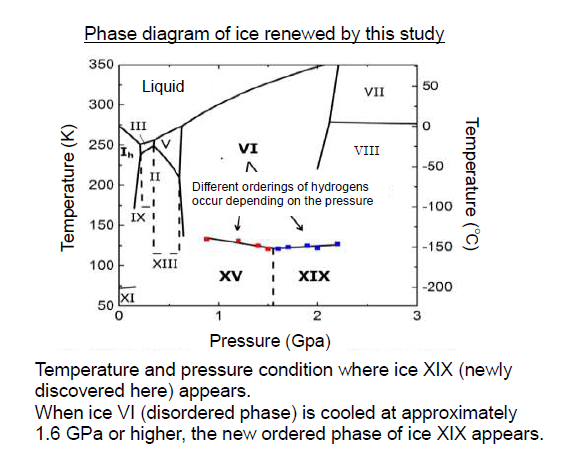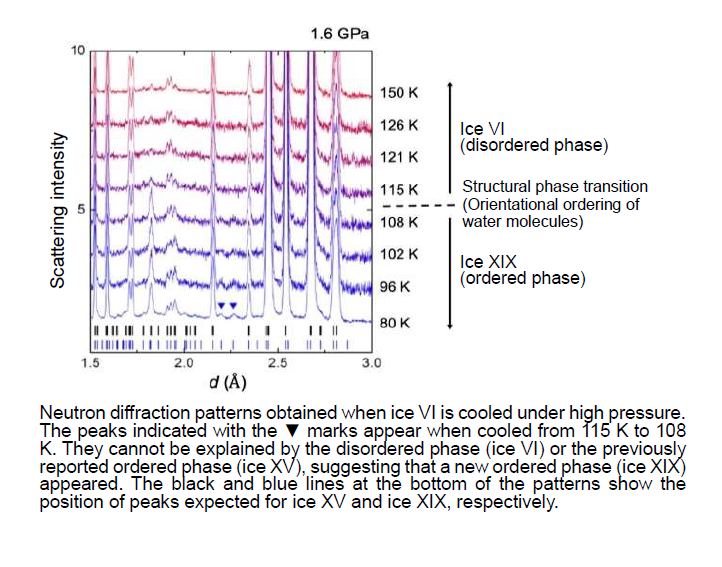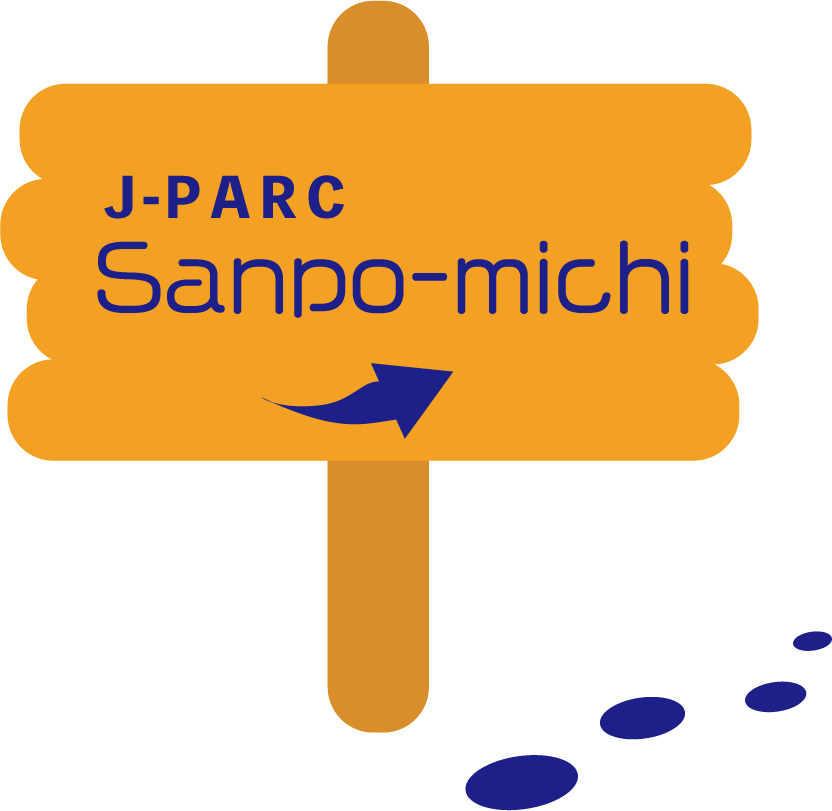J-PARC News March 2021 (Issue #191)
■Announcement of replacement of the J-PARC Center Director
Naohito Saito will finish his term as the Center Director and leave Tokai at the end of March.
Final Message as Director
I will finish my six-year term as the Center Director on March 31, and begin working at the Tsukuba Campus in April. I would like to take this opportunity to express my heartfelt thanks for the understanding and warm support I have received from everyone. After April, I will continue to be involved with J-PARC as a researcher, so I look forward to seeing and working with you all.
It has been decided that my successor will be Dr. Takashi Kobayashi, currently Head of the Particle and Nuclear Physics Division. I sincerely hope you will continue to support J-PARC.

■Shin-ichiro Meigo, Yosuke Iwamoto, and Hiroki Matsuda Receive "Journal Article Award" from Atomic Energy Society of Japan (March 17)
Drs. Meigo and Matsuda of the J-PARC Center and Dr. Iwamoto of the JAEA Nuclear Science and Engineering Center received the Journal Article Award at the annual meeting in spring 2021 of the Atomic Energy Society of Japan, held on March 17-19. The title of the article was "Measurement of displacement cross-sections of copper and iron for proton with kinetic energies in the range 0.4-3 GeV." In recent years, a technique to measure the radiation-induced displacement cross-section of a material by detecting changes in electrical resistance has been developed. This technique requires measurement at cryogenic temperatures (about 4K). To use this technique in the accelerator facility, where it is difficult to set up large refrigeration equipment, Dr. Meigo et al. devised an approach using a compact helium refrigerator. They measured the displacement cross-sections of iron and copper which are candidate materials of the ADS* for the beam window and other components, by using a proton beam accelerated to 0.4-3 GeV with the RCS (3 GeV synchrotron) accelerator. The results were described in a journal article, and this award recognizes the high quality of the article.
*Accelerator-driven nuclear transmutation System

■Discovery of New Phase of Ice (Ice XIX) at Low Temperature and High Pressure (February 19, Press Release)
Ice composed of H2O molecules forms many crystal structures depending on the arrangement of the molecules. (Roman numerals have been assigned to each phase in the order of discovery.) This diversity of ice forms arises due to differences in the arrangement of oxygens (the framework), and the distribution of hydrogens within that framework. For example, even given the same framework, there is a case where, at one of the two positions between adjacent oxygen atoms, hydrogen is distributed on one side of them throughout the entire crystal (ordered phase) and a case where it is distributed randomly on both sites (disordered phase). Generally speaking, the disordered phase changes to the ordered phase at low temperature, but previously there was thought to be only one way for that ordering to occur (i.e., there was thought to be only one ordered phase with respect to the disordered phase.) In recent years, the possibility has been raised that two ordered phases can be formed from a single disordered phase (ice VI), and that hypothesis has become a subject of debate. To check this hypothesis, Dr. Ryo Yamane (at the time, a graduate student at the University of Tokyo) et al. developed a high-pressure cell enabling measurement of the dielectric constant at low temperature and high pressure, and measured the dielectric constant of ice when cooling ice VI. The results indicated that there are two different ordered phases, depending on the pressure conditions. To confirm it, neutron diffraction experiments were carried to investigate the arrangement of hydrogens in the ice crystal. The experiment was carried out at the high-pressure PLANET beamline of Materials and Life Science Experimental Facility (MLF) in J-PARC, using the low-temperature/high-pressure system (Mito system) developed at the University of Tokyo. When ice VI was cooled at high pressure (16,000 atm and 22,000 atm), peaks that could not be explained with the previously reported ordered phase (ice XV) appeared in the neutron diffraction pattern. The results indicated the existence of a second ordered phase, thereby overturning the previous common view that "there is only one ordered phase with respect to a disordered phase," and this new phase was named ice XIX. Everyone is familiar with ice, but still-unknown types of ice exist at low temperature and high pressure, and this recent discovery is expected to be a chance to discover even more diversity in the structure of ice.


■The First Determination of the Xi Hypernuclear Mass: New Insights Toward Understanding the Origin of Nuclei and Structure of Neutron Stars (March 2, Press Release)
The various types of matter that exist around us is due to the existence of atoms with diverse atomic nuclei, ranging from light to heavy in mass. The key to understanding the origin of these diverse nuclei is the nuclear force which acts between the protons and neutrons constituting the nucleus, and research is being conducted at J-PARC to understand its properties and origin. Nucleons are composed of up and down quarks, but it is possible to deepen insight into the properties and origin of the nuclear force by using an accelerator to produce particles (called hyperons) containing strange quarks, which do not exist naturally on earth, and investigating the nuclear force acting hyperon. A team led by Kazuma Nakazawa, Senior Professor at Gifu University, generated large amounts of Xi particles (a type of hyperon) from a high-intensity, high-purity kaon beam produced using an accelerator at J-PARC, and irradiated nuclear emulsion plates (special photographic dry plates). Particle tracks left in the nuclear emulsion plates were analyzed, and the events was found in which a Xi hypernucleus was formed, with a Xi particle bound by the nuclear force to the nitrogen-14 nucleus composing the nuclear emulsion. The mass of the Xi hypernucleus was determined with high precision for the first time, and based on that mass, the magnitude of the nuclear force acting between the Xi particle and atomic nuclei, and between the proton and neutron which are their constituents would be obtained. These are novel research results on the nuclear force—the key to the origin of atomic nuclei—and can help us understand the origin of the matter all around us. Hyperons are also thought to exist inside neutron stars, the densest astronomical objects in the universe, and these results are expected to aid in understanding of the internal structure of neutron stars.
For more information, please visit the following URL: https://j-parc.jp/c/en/press-release/2021/03/02000662.html

■J-PARC International Advisory Committee (March 4 – 5)
Last month, FY2020 advisory committee meetings were held online for four fields relating to the accelerator facilities and experimental facilities at J-PARC. The meeting of the International Advisory Committee (IAC) was likewise held on March 4 and 5. The Chair of the committee is Jean-Michel Poutissou of the TRIUMF research center in Canada. The meeting began with Naohito Saito, Director of the J-PARC Center, making his requests for discussion and reporting on the current situation and future plans of J-PARC. He also introduced the next J-PARC Center Director, Dr. Takashi Kobayashi. During the IAC meeting, the committee members and participants first looked at presentation materials, and then meetings were held focusing on discussions and question-answer sessions. On the second day, advice and proposals by the IAC were presented by the Chair, and the committee indicated its high regard for the steady publication of results and stable operation of J-PARC, despite the ongoing COVID crisis.

■Quantum Beam Science Festa FY2020 (March 9 – 11)
12th MLF Symposium (March 9), 38th PF* Symposium (March 11)
The Quantum Beam Science Festa was held online on March 9-11, and there were 614 participants, mainly users of the MLF and PF. The MLF Symposium on the first day kicked off with an opening message by Kazuhiko Soyama, Senior Principal Researcher at the J-PARC Center, who pointed out that operation of JRR-3 was resumed in February. Then there were reports by Toshiya Otomo, Head of the Materials and Life Science Division, and others on MLF facilities, and efforts to promote safety and utilization of the MLF during the COVID crisis. There were also requests from users, reports on questionnaire results, presentation of the medium/long-term plan for the MLF by facility staff, and a lively exchange of information.
*KEK Photon Factory

■J-PARC Hello Science "Emergence of a New Type of Neutrino?!": Data Acquisition for the JSNS2 Experiment Begins at J-PARC (February 26, Tokai-mura Industry and Information Plaza "iVil")
In recent years, it has been suggested in a number of pioneering experiments that there is a new type of neutrino (sterile neutrino) different from the three types of previously known neutrinos (the electron neutrino, muon neutrino, and tau neutrino). An experiment searching for this neutrino was recently started at the MLF of J-PARC. At this Hello Science event, the researcher responsible for the experiment, Dr. Takasumi Maruyama, Neutrino Section, Particle and Nuclear Physics Division, gave a detailed explanation of the standard theory of elementary particles, as it is understood today. His explanation of basic principles went past the time allotted for the event, and it was decided to carry the talk over to the next time, and describe the experiment in the new fiscal year. On the 9th of last month, a press release was issued, and the experiment was covered in a newspaper article. There were many questions, and a high level of interest.

■Senior Undergraduates at Nagoya University Conduct Graduation Research using the Muon Beam of the MLF!
As their graduation research, four senior undergraduates in the High Energy Physics Laboratory (N-Lab)* of Nagoya University—Kazumasa Hashizume, Yuki Nabeyama, Yuya Adachi, and Soh Sugiyama—conducted a muon decay observation experiment at MLF on January 26 and 27. The students took the initiative in putting the experiment together and carrying it out, and handled every stage of the work from devising the experiment, to fabrication of detectors and calculation of expected data. For the students, this was their first experiment with a beamline and apparently there were some difficulties, but they were able to set up the detector and target, carry out tasks like adjustment of the read-out system, complete the measurements without incident, and report the results of data analysis at the graduation thesis presentation session. This experiment for graduation research was carried out with the support of a KEK accelerator science internship, and the cooperation of everyone involved with MLF.
*High Energy Particle Physics Laboratory
For more information, please visit the following the URL: https://www.hepl.phys.nagoya-u.ac.jp/en/news/2020/210215.php

■Sanpo-michi #7 Sunset from J-PARC
Ibaraki Prefecture has no tall mountains. If you look out from Tokai-mura, where J-PARC is located, you see a flat plain and ocean, except in one direction on the north side.
In the spring, the air becomes less clear due to water vapor, pollen, and Asian Dust, and even the mountains become difficult to see. Even so, around sunset the previously hazy mountains in the distance appear in silhouette.
The photo shows a scene at dusk, taken toward the west from the rooftop of the J-PARC Research Building. Slightly visible to the left of the setting sun is Mt. Tsukuba, and to the right are the Nikko Mountains.
The Super-Kamiokande is located almost due west from J-PARC, and this corresponds exactly to the direction of the setting sun on the day of the photo. Neutrinos produced at J-PARC pass under the Kanto Plain, and through the plains on the south side of Mt. Akagi and Mt. Haruna. They also pass almost directly under Mt. Asama, an active volcano, under the peaks of the Northern Alps (Hida Mountains) admired by mountain lovers such as Mt. Tsubakuro, Mt. Suisho, and Mt. Noguchi-Goro, and then rush into the huge water tank of Super-Kamiokande. Most neutrinos pass through the water tank, and shoot on in the direction of the sun.
During the daytime, we live our lives oblivious to things like the blessings of the sun, but when we look at the deep red sky at sunset, we can feel the sun's size and distance. Neutrinos pass through the sun too on their almost infinite trip into deep space.

